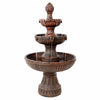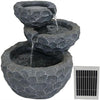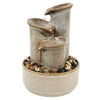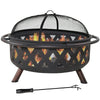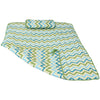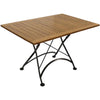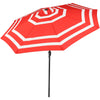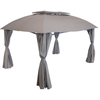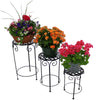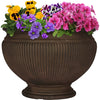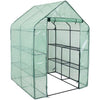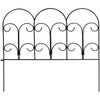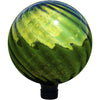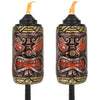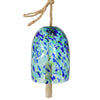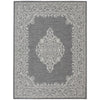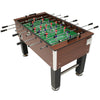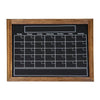Water fountains have captivated human imagination for millennia, gracing gardens, cities, and public spaces with their beauty and soothing sounds. The rich history of fountains began in ancient civilizations and progressed through medieval times, the Renaissance, and into the modern era. Let’s explore the fascinating evolution of these delightful structures.
When Were Fountains Invented?
Fountains were not always strictly decorative, as they are today. Long, long ago in ancient times, fountains were used as a water resource for communities. Follow along as we travel back in time to learn more about the evolution of water features.
Ancient Civilizations Through the Middle Ages
Mesopotamia and Egypt (c. 3000 BCE - 1000 BCE)
The story begins in ancient Mesopotamia and Egypt, where some of the earliest fountains were conceived around 3000 BCE. In Mesopotamia, fountains were simple structures used in temple gardens to provide a source of water. These early fountains symbolized life and abundance, and were integral to the lush, sacred spaces of the time.
In ancient Egypt, fountains adorned the gardens of the wealthy. The Egyptians understood the aesthetic and practical benefits of water features, using them to enhance the beauty of their surroundings while providing a cooling effect in the hot desert climate. These early fountains were often fed by hand-carried water or simple mechanical means.

Greece and Rome (c. 600 BCE - 300 BCE)
Fast forward to ancient Greece, around 600 BCE. The Greeks advanced fountain design significantly, integrating them into public spaces as symbols of civic pride and convenient use. Greek fountains were typically connected to aqueducts, providing fresh water for drinking and bathing.
The Romans took these innovations to new heights. With their sophisticated aqueduct systems, Roman cities were dotted with grand fountains that served as public monuments. These fountains were not only functional, supplying water for daily use, but also decorative. Fountains were made from bronze or stone and were designed to resemble animals or local and mythological heroes.
Medieval Times Through the Renaissance
Medieval Times
During the Middle Ages, the grandeur of Roman fountains saw a decline, but they didn’t disappear entirely. Monasteries and castles often featured simpler, more functional fountains within their gardens and courtyards. In the Islamic world, particularly in Moorish Spain, fountains became central elements of garden design. These Islamic gardens were characterized by their tranquil, reflective pools and intricately designed water channels, creating oases of calm and beauty.
Renaissance Revival
The 14th century brought with it the Renaissance period, where the revival of classical art and architecture sparked, and fountains were no exception. Italy, especially, saw a blossoming of fountain design. Renaissance gardens in Florence and Rome became showcases for elaborate fountains that celebrated mythological themes and human creativity.
Innovations in hydraulic engineering during this period allowed for more complex and decorative designs. Some fountains featured intricate water displays that delighted visitors and demonstrated the era's engineering marvels.

Baroque Extravagance
The Baroque period (17th to 18th century) took fountain design to new heights of extravagance and theatricality. The fountains at the Palace of Versailles in France are iconic examples, with their grand scale, dynamic water displays, and intricate sculptures. These fountains were designed to impress and awe, reflecting the power and grandeur of the ruling class.
Modern Fountains
In the modern era, technological advancements like indoor plumbing have made the need for fountains as a water source a thing of the past. New technology revolutionized fountain design and has made them more widespread. Today, fountains can be found in urban plazas, parks, and private gardens around the world, incorporating cutting-edge technology, lighting, and music. Modern fountains, such as the Bellagio Fountains in Las Vegas, are spectacles of synchronized water, light, and sound, enchanting audiences with their choreographed performances.
Materials like fiberglass, stainless steel, and advanced ceramics have expanded the possibilities for fountain design, allowing for greater creativity and durability. From minimalist, Zen-inspired water features to interactive installations, modern fountains continue to evolve, reflecting contemporary tastes and innovations.
Throughout history, fountains have symbolized the intersection of nature, art, and technology. They have evolved from simple water sources in ancient gardens to complex, awe-inspiring installations in our modern cities. Whether providing a serene spot for reflection, a playful splash of water in a public square, or a grand display of artistry and engineering, fountains remain a timeless testament to human ingenuity and our enduring love for the beauty and tranquility of flowing water.
Fountains today are perfect for indoor and outdoor spaces and connect us to the civilizations of the past and the innovations of the present. Next time you’re admiring a fountain, take a moment to appreciate the rich history and artistry that has gone into creating them. Whether you’re looking for a variety of outdoor fountains or indoor tabletop fountains, Sunnydaze Decor has plenty of options to fit any space!
